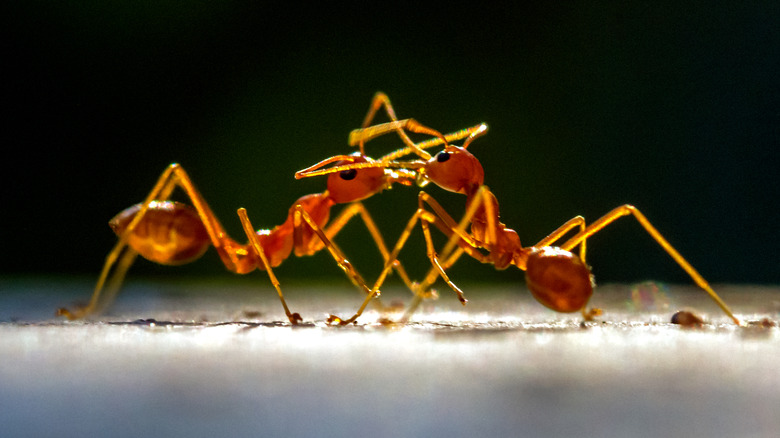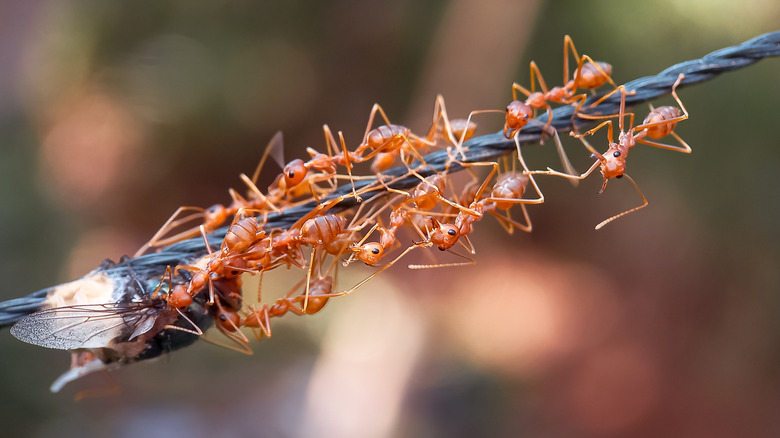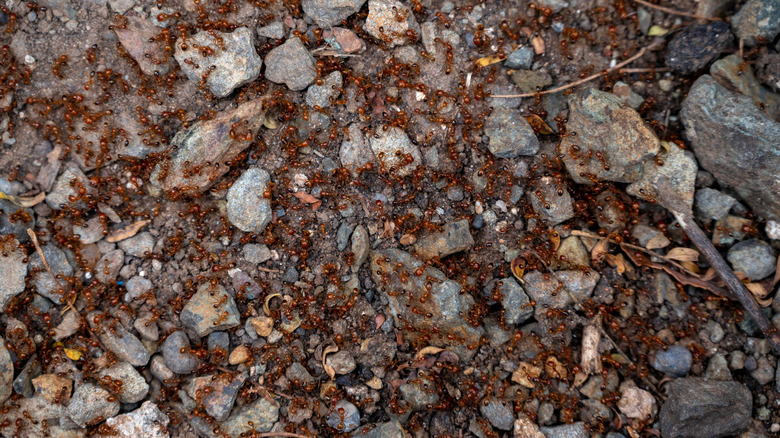The Invasive Ant Species That's Destroying Our Ecosystems
Invasive species are a concern under any circumstances, but when they are named for their incredibly painful sting, you definitely need to watch out. Red imported fire ants (Solenopsis invecta) earned their colloquial name from the burning stings they inflict on people, pets, livestock, and wildlife. These tiny insects, which average between just three and six millimeters in length, inject a potent venom into their victims, leaving red welts that can become infected and scarred. It's even worse for the uncertain portion of the human population who are allergic to these stings, and may go into shock in extreme cases.
Now that you're good and terrified, it's time to talk about where these little demons originate, where they have spread, and the impact they are having on global ecosystems. Red imported fire ants, sometimes called RIFAs for short, are endemic to South America, particularly in Brazil and Argentina. They first arrived in the United States in the 1930s at the port of Mobile, Alabama. Ships sometimes used soil as a form of ballast, and it is believed that some of this soil, containing RIFAs, was dumped overboard at the port.
Fast forward to the present, and RIFAs can now be found in all of the southeastern states. More recently, they have been added to the list of invasive species in California after populations were found in the southern and central portions of the state. RIFAs are spreading far and wide, but what does that mean for the ecosystems they invade?
The consequences of invasive ants
Introducing non-native animals to an environment can quickly throw the ecosystem off balance, and red invasive fire ants pose a particularly great threat in this case due to their highly aggressive nature. Anyone who grew up in the southern U.S. has probably been warned about staying away from the anthills this species builds. If anything disturbs the mound, a swarm of stinging ants will descend on it, attacking insects, reptiles, amphibians, mammals, and birds with equal vigor, frequently leaving their victims dead. They are especially dangerous to juvenile animals, and along the Gulf Coast, they have been seen attacking sea turtle hatchlings, which are vulnerable enough to be killed by a single sting.
RIFAs are master foragers, and as such, they have managed to outcompete several native ant species. It's important to learn the difference between fire ants and regular ants so that you know friend from foe. In many regions, RIFAs have become the dominant species in the ecosystem, much to the ire of humans, particularly in the agricultural sector. RIFAs love to feast on farm crops, and they can inflict severe pain on livestock. On top of that, many ants have a symbiotic relationship with aphids, providing them with protection, which in turn fosters even more crop destruction as both ant and aphid chow down. In cases of extreme infestation, doing any work in the field becomes almost impossible due to the number of anthills that crop up, which can damage harvesting equipment.
Can anything be done about invasive fire ants?
One of the reasons that invasive species are so incredibly dangerous to ecosystems is that, once they are loose in a new environment, it becomes almost impossible to keep track of them, especially when you're dealing with a species that only reaches a few millimeters in size. Red imported fire ants breed quickly and in very large numbers. They live in colonies with one or more queens, each of which can lay hundreds of eggs on a daily basis. Plus, the anthills they leave at the surface are merely the tips of vast underground tunnel networks, which can stretch for miles. At this point, the species occupies more than 300 million acres of American land, and the scariest part is, they might just be getting started.
Some efforts have been made to eradicate the RIFA in the U.S., but they have had very limited success. The species doesn't just spread fast and far; they are also frustratingly difficult to kill. Insecticides are the most effective method, but unless it is constantly applied to the environment (which can be devastating to native organisms), the ants will return. RIFAs appear to be heartier than other ant species, as they can re-infest an area treated by pesticides within just a few weeks. Efforts to contain their spread are ongoing, but realistically, there isn't much to be done at this point with how far the red imported fire ant has spread and how rapidly it reproduces.


